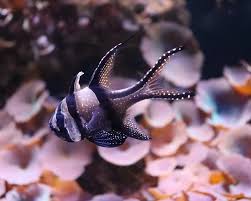Exploring the Role of the Dragon in Chinese New Year Celebrations

Chinese New Year, also known as the Spring Festival (春节, Chūnjié), is the most significant traditional holiday in Chinese culture, celebrated by millions of people worldwide. This festival marks the beginning of the lunar new year, which typically falls between January 21 and February 20. It is a time for family reunions, honoring ancestors, feasting, and various rituals aimed at welcoming prosperity, health, and good fortune for the year ahead. Among the many symbols and customs associated with Chinese New Year, the dragon plays a particularly prominent role in the festivities.
The dragon, a mythical creature of immense cultural significance, has been intertwined with Chinese culture for thousands of years. It represents power, strength, wisdom, and good fortune. In the context of Chinese New Year, the dragon is seen as an important figure that drives away evil spirits and ushers in a new year of prosperity and happiness. This article will explore the dragon’s role in Chinese New Year celebrations, from the dragon dance to its symbolism in art, decoration, and ritual, and its deep connection with the hopes and wishes for the upcoming year.
The Dragon in Chinese Culture: Symbolism and Significance
Before delving into its role in the Chinese New Year festivities, it is important to understand the deep symbolism of the dragon in Chinese culture. Unlike in many Western cultures, where dragons are often depicted as fearsome and destructive creatures, Chinese dragons are revered as benevolent and auspicious beings. They are associated with the elements of water—rain, rivers, and seas—symbolizing abundance, fertility, and the cyclical nature of life. The dragon also represents the emperor in ancient China, as the emperor was often referred to as the “Dragon Emperor,” a title denoting their divine right to rule.
In Chinese mythology, dragons are also linked to the concept of transformation and renewal. As creatures capable of shapeshifting and traversing different realms, dragons embody the power of change and the continuity of life. This idea of transformation resonates strongly with the themes of rebirth and renewal that are central to Chinese New Year celebrations.
The dragon’s importance in Chinese culture is reflected in the various forms of art, architecture, and customs. It is commonly seen in decorative motifs such as on imperial robes, ceramics, and architectural features, especially in the Forbidden City and other palaces. The presence of the dragon in Chinese New Year celebrations draws on these symbolic meanings to convey the hopes of bringing good fortune, happiness, and wealth to individuals and families.
The Dragon Dance: A Central Element of Chinese New Year Celebrations
One of the most iconic elements of Chinese New Year celebrations involving the dragon is the Dragon Dance. This highly energetic and vibrant performance is an essential part of the holiday festivities, and it symbolizes the bringing of good luck, prosperity, and a successful new year. The Dragon Dance is performed by a team of dancers who manipulate a large, colorful dragon costume on poles. The dragon is typically made of fabric or other lightweight materials and can range in length from a few meters to over 100 meters, depending on the size of the event.
The Dragon Dance is often performed in parades, street festivals, and public gatherings, and its movements are meant to imitate the dragon’s mythical qualities, such as its ability to fly and swim. The dragon moves in a wave-like fashion, winding and undulating through the streets, often accompanied by the sound of drums, cymbals, and gongs. The rhythm of the music is essential to the dance, as it provides the energy and pulse that guides the dragon’s movements.
The Dragon Dance is not only a spectacle but also a ritual designed to drive away evil spirits and bring good fortune to the community. It is believed that the dragon’s movements, combined with the sound of the traditional instruments, scare away negative forces and ensure that the new year begins on a positive note. The dragon is seen as a protector, and its presence in the dance brings an aura of safety, prosperity, and joy to those who witness it.
In addition to its role in chasing away evil spirits, the Dragon Dance is also thought to attract wealth and success. This belief is tied to the dragon’s association with water and the ability to control the flow of rivers and seas, which in Chinese culture, represents abundance and prosperity. By performing the Dragon Dance, communities hope to invite these blessings into their homes and businesses for the coming year.
The Dragon as a Symbol of Good Fortune in Chinese New Year Decorations
In the days leading up to Chinese New Year, homes and businesses across China and other countries with large Chinese communities are decorated with symbols of prosperity, happiness, and good fortune. The dragon is one of the most common and revered symbols in these decorations. Often seen alongside other traditional motifs such as the phoenix, coins, and the character for “fu” (福, meaning fortune), the dragon is believed to bring blessings to the household.
Dragon-themed decorations can be found on lanterns, banners, and even red envelopes (红包, hóngbāo) given as gifts during the festival. The color red is also a significant part of these decorations, as it is considered a lucky color in Chinese culture, symbolizing good luck and warding off evil spirits. The presence of the dragon in these decorations serves as a reminder of the importance of strength, power, and the continuous flow of good fortune that is hoped for in the year ahead.
The dragon is also prominently featured in the design of traditional Chinese New Year couplets (春联, chūnlián). These are pairs of red banners with auspicious phrases that are displayed around doorways to invite prosperity and happiness. Sometimes, the image of a dragon is incorporated into the calligraphy, further emphasizing its role in attracting positive energy and blessings.
The Dragon and Ancestor Worship in Chinese New Year
Chinese New Year is a time for family reunions and honoring one’s ancestors. It is deeply rooted in traditions of ancestor worship, where families gather to pay respect to their deceased relatives and seek their blessings for the coming year. The dragon, as a symbol of power, strength, and protection, is often invoked during these rituals as a way to connect the family to their ancestral heritage and ensure that the new year is filled with blessings from the past.
In some regions, families display dragon-themed altars or offerings to their ancestors. These offerings can include incense, fruits, and other symbolic items. The dragon, representing the vitality and strength of the ancestors, is seen as a bridge between the living and the deceased. By honoring the dragon in these rituals, families hope to ensure the continued protection, guidance, and support of their ancestors in the coming year.
The Dragon and the Chinese Zodiac
In the Chinese zodiac, the dragon holds a special place as one of the twelve animal signs. People born in the Year of the Dragon (e.g., 2024, 2036) are believed to possess traits such as intelligence, bravery, and ambition. As the only mythical creature in the Chinese zodiac, the dragon stands out as a symbol of exceptional power and potential.
During Chinese New Year, the Year of the Dragon is often associated with increased fortunes and opportunities. People born in this year are believed to have a year filled with success, vitality, and good luck. The influence of the dragon during the Year of the Dragon is considered particularly auspicious, and people often engage in special rituals and celebrations to honor the dragon’s power and to ensure a prosperous year ahead.
Conclusion
The dragon plays a central and multifaceted role in Chinese New Year celebrations. As a symbol of power, good fortune, protection, and transformation, the dragon represents the hopes and aspirations for the coming year. Through the Dragon Dance, decorations, rituals, and ancestor worship, the dragon serves as a reminder of the importance of renewal, prosperity, and strength in Chinese culture. Whether through the lively movements of the Dragon Dance or the auspicious presence of dragon-themed decorations, the dragon continues to be a powerful symbol of good fortune and spiritual connection during Chinese New Year celebrations. By embracing the dragon, the Chinese people honor their rich cultural heritage and the enduring belief in the transformative power of the New Year.


